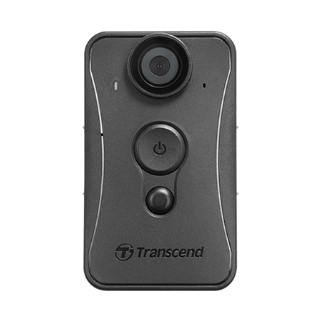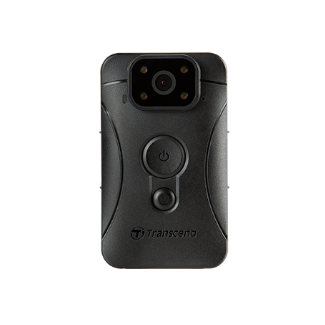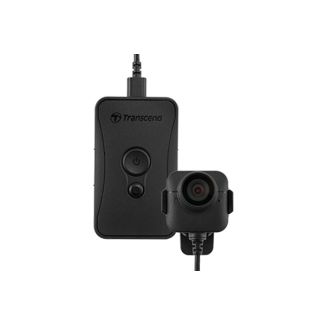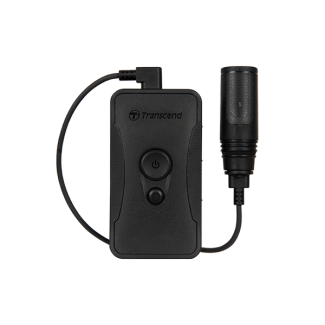BodyCams - Body Worn Cameras & Accessories
Transcend’s DrivePro feature-packed body cameras are designed specifically for public safety professionals. With a 12-hour battery life, IP67 rated environmental sealing, military-grade shock resistance, and a pre-event buffer, the DrivePro Body 30 is always ready for action. The Exmor™ image sensor, high-quality lens, automatic infrared illumination allow use in all conditions. Rugged and durable design with accessories to suit we can offer a complete solutuon for every application. Explore our wide selection to find one that meets your requirements or contact our team today to find out the best solution and pricing.
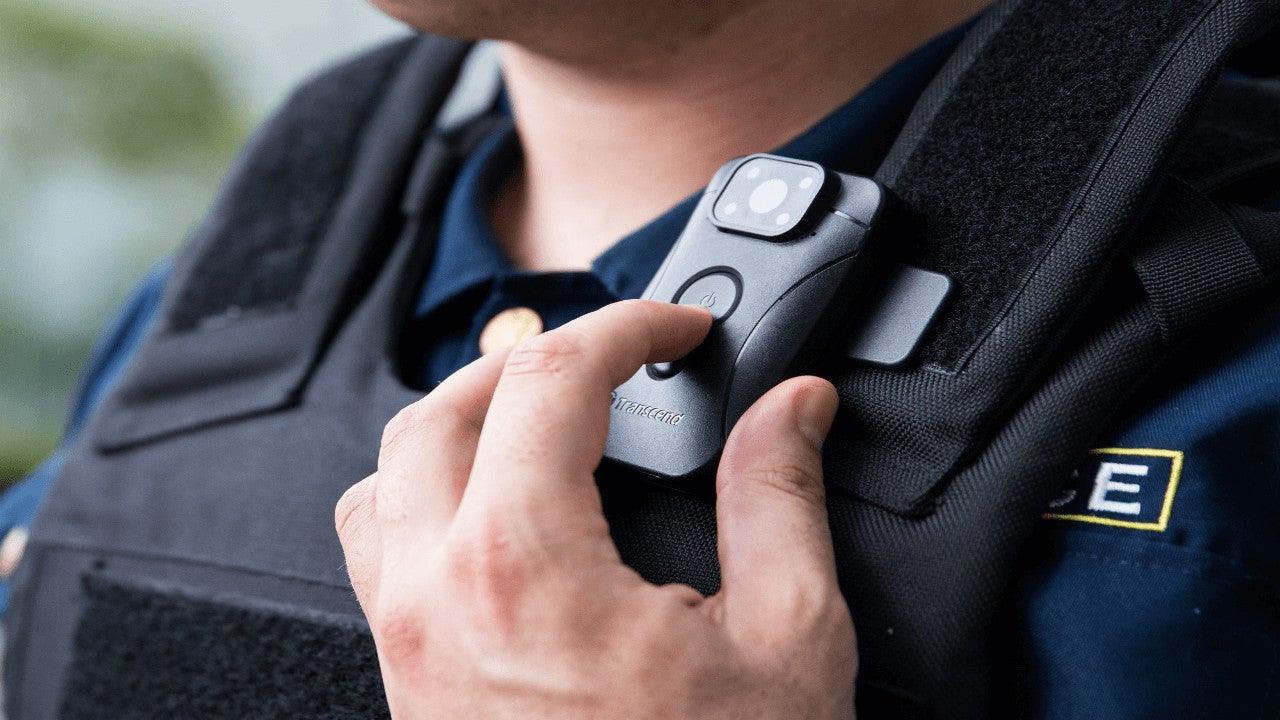
-
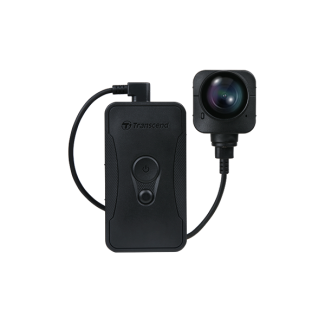 DrivePro Body 70 Body Camera
DrivePro Body 70 Body Camera2K QHD 1440P 64GB Internal Storage 9-hour battery life
Key Features:
- Connect to mobile devices easily and quickly
- Built-in GPS receiver for geotagging videos and images
- Buffering mode captures crucial footage and saves storage space
- Built-in Wi-Fi function for mobile live streaming
-
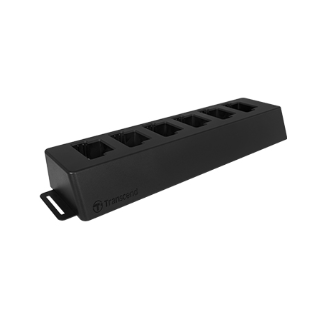 Body Camera Docking Station (TS-DPD6P)
Body Camera Docking Station (TS-DPD6P)6 bay BodyCam chargeing/docking station with USB and network interfaces
Suits: DrivePro™ Body 20 and DrivePro™ Body 52
-
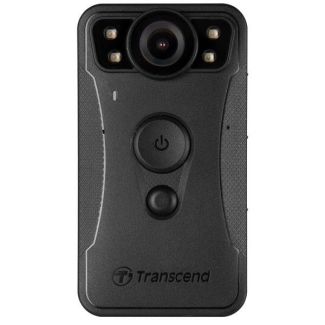 DrivePro Body 30 Body Camera$455.00
DrivePro Body 30 Body Camera$455.00Body Cam with up to 12 hours of battery, high storage capacity, and high resistance to water, dust, and shock
Key Features:
- High-sensitivity Sony image sensor
- Infrared LEDs for night vision
- Image Enhancement Technology
- Built-in 12-hour battery for long recording time
- Quick and easy connectivity
- Compliant with IP67 and U.S. military standards to be dust-proof, waterproof, and shock resistant
- Vibration alerts remind users of operation in progress
- Wide Dynamic Range (WDR)
- TAA compliance
- Loop recording allows the body camera to overwrite old video files with new ones.
Body Cameras
Body cameras are compact and portable surveillance devices utilised by various professions to enhance public safety through video surveillance and data storage. Originally intended for law enforcement personnel to visually and audibly record their interactions with the public, this remains one of their key functions. The increasing demand for enhanced accountability in law enforcement has led to a substantial rise in the use of body-worn cameras, prompting significant advancements in the technology. The body cam market is expected to continue its ongoing technological evolution, resulting in superior processing and advanced data storage capabilities.
Types of Wearable Body Cameras
Body-worn cameras are equipped to record both audio and video. They are typically worn on the front of the body - the specific placement of the body camera can vary depending on the manufacturer's design and the preferences of the wearer. However, the most common locations for wearing a body camera are on the shoulder, the chest, the collar/lapel, or on the head/helmet area. Beyond where it is worn, there are still many different varieties of body camera, with different models that offer different capabilities.
- Some models feature a front-facing screen, allowing those being filmed to view the captured footage.
- Certain body cameras can stream live video and audio feed to a central command centre or other devices in real-time, allowing supervisors to monitor situations remotely.
- Night vision body cameras are equipped with infrared technology, allowing them to record clear footage even in low-light or nighttime conditions.
- Body cams with bluetooth functions often come with a trigger option that can automatically activate recording when a specific event occurs, such as activating a police cruiser's lights or sirens or triggering the crash sensor.
- A recent development to body cam tech is the wireless holster sensor camera, which automatically activates when an officer draws their gun, eliminating the need for manual activation.
- Certain cameras have flashing lights on the front to indicate video recording mode, and the recorded video typically includes date, time, date stamps, and GPS coordinates. This footage can be uploaded to external databases maintained by police agencies or third-party vendors, with cloud storage becoming increasingly common for data storage.
Features of Body Worn Cameras
- A good body camera typically comes with a range of functions and benefits, which may include:
- HD (High Definition) recording capability, which will allow recording 720p/1080p video quality.
- Up to 11 hours of continuous video recording on a single charge.
- Access control to the secure footage that is being recorded.
- Integration with CCTV, systems for ease of use.
- A visible deterrent that will ideally discourage criminal behaviour from individuals in front of (and behind) the camera.
Factors to Consider While Buying a Body Worn Camera Online
With the recent surge in body camera utilisation, the market is now flooded with a wide array of body cams, which may pose a challenge for consumers trying to select the most suitable technology for their requirements. When weighing up body cameras, here are some things to consider before you buy:
User-Friendly Interface: A seamless user experience is the key to optimal body camera usage. An intuitive interface, uncomplicated controls, and clear display that will facilitate easy access to footage review are all essential components in maintaining peak body camera operation.
Reliable Battery Life: In most situations that necessitate body cams, it is rarely practical to make everyone wait while you sit in the corner and wait for your battery to charge. It’s therefore vital to ensure your body cam has a long and reliable battery life that won’t let you down at the wrong time (or ideally, at any time). Equally important is a swift charging capability, enabling quick recharging when needed.
Video and Image Clarity: Undoubtedly, the body camera's core functionality demands close attention—ensuring dependable and crystal-clear visual recording. Contemporary body cams typically boast high-resolution lenses, offering a broad field of view to capture comprehensive surroundings. Equally important is verifying the body cam's capability to record in low-light settings, which can prove extremely helpful in situations with poor lighting.
Sound Recording Quality: The body camera's ability to capture audio with precision can be just as important as the visual quality; particularly if your intent is surveillance or monitoring. A top-notch microphone is essential, ensuring clear audio recording even in environments with significant noise pollution.
GPS and Location Tracking: Numerous body cameras now come with GPS and location tracking features, which will enable remote monitoring of the device’s whereabouts, facilitating swift assistance from first responders. This function proves particularly helpful in emergency scenarios when the wearer may not have the opportunity to call in their whereabouts.
Water Resistance and Durability: Body cameras are often worn in challenging environments, such as extreme weather and other situations with potential water exposure. Selecting a camera with durability and water resistance is crucial to withstand such conditions without sustaining damage.
Reliable Storage Capacity: Another thing to keep in mind is the body cam's storage capacity. You’ll ultimately want something that will securely hold hours of footage without getting glitchy. Swift upload speeds are essential for quick transfer of recordings to a computer or server. Keep in mind that some cameras offer cloud-based storage, enabling easy access to footage from any internet-connected device.
Compliance with Legal and Privacy Regulations: Given the surveillance-centric era that we live in, it’s increasingly important that you ensure compliance with the appropriate legal and privacy regulations. As these laws vary across countries and states, it’s important to verify that your body cam technology adheres appropriately to the applicable regulations in your specific location.
Compatibility: Different companies use different systems to operate and store body cam footage, so it’s extremely important that you make sure that your body cam tech is going to be able to integrate with your existing software to ensure effective functionality with minimal glitches.
Affordability: Body camera prices are contingent on their features and capabilities as well as their quality, so costs tend to vary quite wildly. Finding an affordable yet reliable model becomes essential for organisations or operations with budget constraints. Rest assured, despite some high-priced options, several models strike a balance between dependability and affordability, ensuring both quality assurance and value for money.
Why choose Tekdis?
Besides our ample range of high quality body cameras, Tekdis also stocks a massive range of various other leading technologies; from medical and RF solutions, to system integrators and industrial computing, and more. We strive to cater to each and every customer’s specific needs by listening to their requirements and providing top-notch tech support, professional sales procedures, and dependable distribution services. You can browse the full range of Tekdis products here.
We are always growing our product range in response to market demands and emerging technologies. If you can’t find the particular product that you’re looking for, please don’t hesitate to reach out to us via our contact page so that our friendly staff can assist you directly.
Body Camera FAQs
What is a Body Worn Camera (BWC)?
A Body Worn Camera (BWC) is a small, portable device that law enforcement officers, security personnel, and other professionals wear on their body to record audio and video footage of their interactions with the public and their surroundings.
How does an officer's body cam work, and how is a body cam different from a dashboard camera or CCTV system?
A body cam is traditionally worn on an officer's uniform (typically on the chest or shoulder area), and it can be activated either manually or automatically in response to certain triggers, such as the drawing of a weapon or activation of emergency lights. The body cam continuously records audio and video footage, which can be stored in its internal memory or transmitted to a secure server. While both body cams and dashboard cameras (mounted on police vehicles) serve similar purposes, body cams offer a more personal perspective, capturing interactions up close, especially in situations where the officer leaves the vehicle. CCTV systems, on the other hand, are stationary surveillance cameras installed in fixed locations, like public spaces or buildings, and they do not provide the same mobility and first-person view as body cams.
What are some of the primary limitations of a body camera?
Body cameras are not without limitations. Depending on the position of the wearer, a body cam may have a limited field of view, meaning it may not be able to record a situation from an adequate angle - especially in fast-paced or crowded situations. Continuous recording may also deplete a battery quickly, potentially affecting the availability of footage. An officers' discretion to activate or deactivate the camera may also result in gaps in recording. There have also been privacy concerns regarding the very nature of body cameras, particularly when they are recording in private areas where sensitive conversations between citizens and/or officers may be occurring.
How long will body cam files/footage be retained?
The retention period for body cam footage can vary based on departmental policies, local laws, and the nature of the recorded events. In many cases, uneventful footage may be deleted after a short period, while footage related to investigations or incidents may be stored for longer periods or indefinitely, if it is required for legal purposes.
What will prompt an officer to activate a body cam?
The specific circumstances that prompt an officer to activate a body cam can vary depending on departmental policies and the situation at hand. Generally, officers are expected to activate their body cams during law enforcement encounters, traffic stops, arrests, searches, and any interactions with the public that might escalate or be of public interest. Policies often mandate activation during potential use-of-force incidents or when responding to emergency calls. When it comes to body camera procedure, it is up to each individual officer to do the right thing and follow correct protocol.
